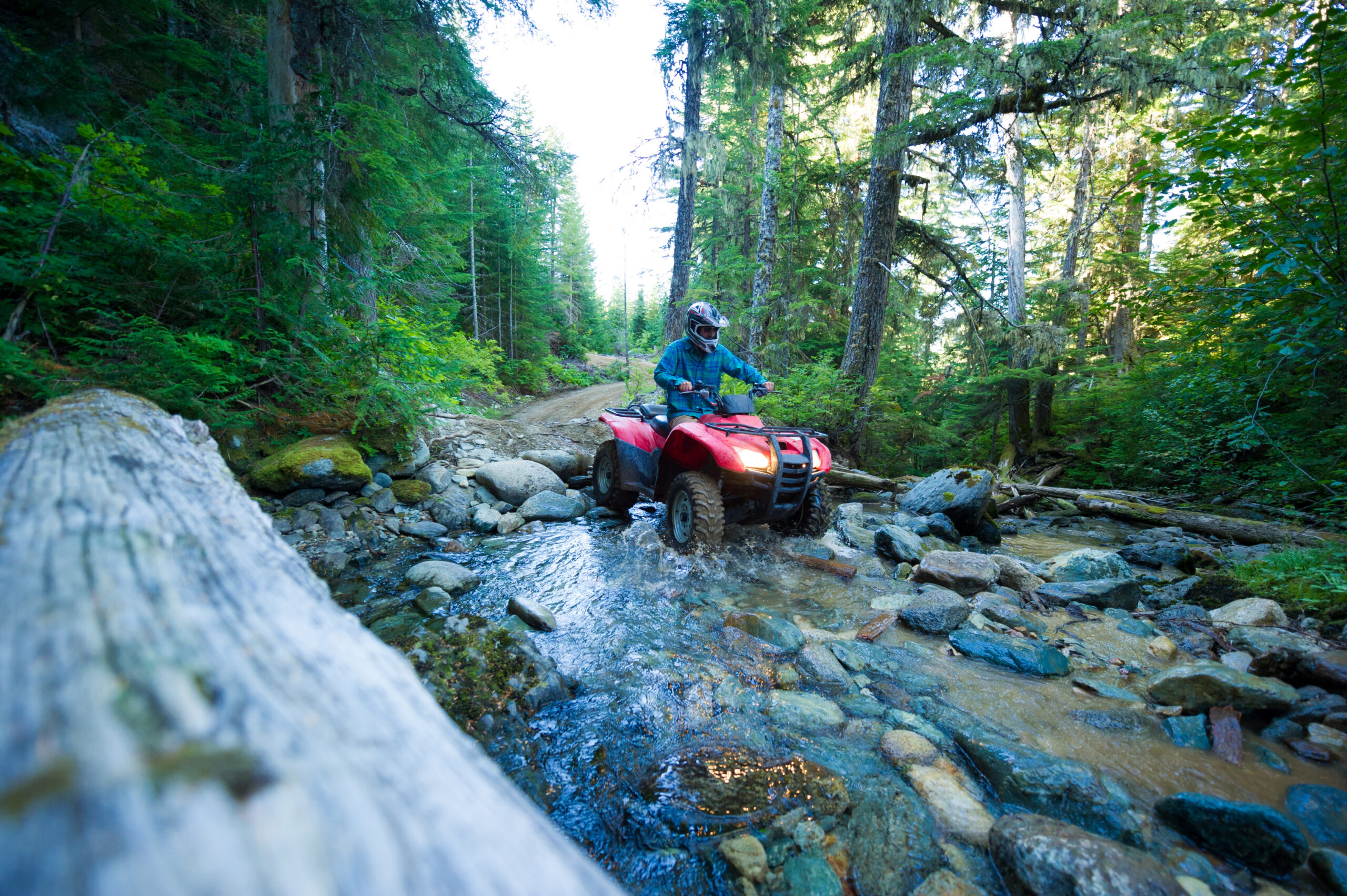ATV Safety Tips
Published May 10, 2024
-
Categories:
- Recreational Vehicles
- Spring
- Summer

As the weather continues to get warmer, it’s time to get excited because it’s finally warm enough to bring out your ATV! Before you go on your first ride this year, make sure you’ve brushed up on safety tips to prevent serious injury while using your ATV. We’ve compiled some ATV safety tips for you below.
ATV Tips for Safe Use
Always wear DOT compliant gear
Safety gear you should be investing in includes a helmet, goggles, long sleeves, long pants, gloves, and boots that are long enough to cover your ankles. These help to prevent you from scraping or cutting yourself, and from a serious concussion if you were to fall off your ATV. It can sometimes be hard to avoid every small branch and twig hanging from a tree or plant when you’re using an ATV, so exposing as little of your skin as possible is a good practice.
Avoid paved roads
ATVs were not designed to be used on paved roads. Driving on main roads or highways with an ATV is high risk because it’s a bigger vehicle than a motorcycle, so it’s more difficult for cars to avoid. Using your ATV only on trails a good practice. If you must cross a road, only do so when there is no traffic, and if crossing the road with an ATV is permitted by law.
Never ride under the influence
This one is self-explanatory. Riding under the influence decreases your ability to react to oncoming hazards and dangers. It also impairs your ability to properly navigate, handle your vehicle, and make sure your passengers are safe. Under no circumstances should you ride under the influence. If you are under the influence, ask another passenger to operate the ATV, or wait until you are sober if you’re alone.
Don’t carry passengers on single-rider ATVs
This can pose a risk of injury for both you and the passenger as they are designed for only one person. On a two-person ATV, make sure to limit the riders to only the driver and a passenger. Adding too many passengers can cause the ATV to have improper weight distribution, thus preventing it from being able to fully maneuver around hazards at high speeds.
Ride an ATV that’s right for your age and abilities
Don’t try to ego-ride an ATV. If you’re a beginner, consider getting something smaller to maneuver that doesn’t go as fast. If you have a family with small children, consider getting a two-person ATV that can pull a cart for small children at low speeds. There are ATVs for every use case, depending on how many passengers you need, the speed, the maneuverability, etc. so make sure you take those things into account before you buy.
Supervise riders younger than 16
ATVs are not toys; they are recreational vehicles that can pose serious risk of injury if not used with proper safety precautions. If an individual under 16 is interested in using your ATV, make sure to supervise them while they’re using it, and advise that they use only low speeds. Even after an individual turns 16, it’s a good idea to have a spotter while you’re riding in case something happens to you.
Inspect before you ride
Before you ride, we recommend you inspect the ATV to make sure all crucial parts are in working condition.
Here are some things you should look for when completing your pre-ride check:
Tires and wheels
- Check your air pressure. Incorrect air pressure can cause mishandling of the vehicle while in use, or tire and wheel damage. Do not use an car tire pressure gauge when measuring an ATV tire’s PSI, as it will most likely give an inaccurate reading. Instead, use a low-pressure gauge.
- Air leakage. Check for cuts or gouges that could cause air leakage in the tires.
- Check your axels. Make sure your axel nuts are secured tightly by cotter pins, and wheel nuts are properly torqued.
Controls and cables
- Ensure all controls are in working order.
- Throttle and other cables. Ensure that the throttle moves without interruption and snaps closed with the handlebars in any position. If a throttle limiter is equipped, ensure it’s adjusted appropriately for you.
- Check that the brakes operate smoothly. Also check the foot shifter to make sure it’s firmly attached.
Lights and electrics
- Check the ignition switch by switching it on and off.
- Make sure the engine stop switch turns off the engine.
- If headlights and taillights are equipped, make sure they’re working properly.
Oil and fuel
- Make sure you have enough fuel before you head out.
- Check the oil level with a dipstick while the engine is off.
- Check for oil leaks that might be imminent.
- Check the condition of the air filter.
Chain/driveshaft and chassis
- Inspect the chain and lubricate regularly.
- Check for oil leaks on your drive shaft if you have that instead of a drive chain.
- Feel around for loose nuts and bolts.
Choose WebFirst Insurance for your ATV Insurance
We want to make sure you have peace of mind while enjoying your ATV this summer. By working with multiple carriers, WebFirst Insurance can get you the right coverage to protect your assets. Consider switching to WebFirst Insurance; get started by getting a quote below.
